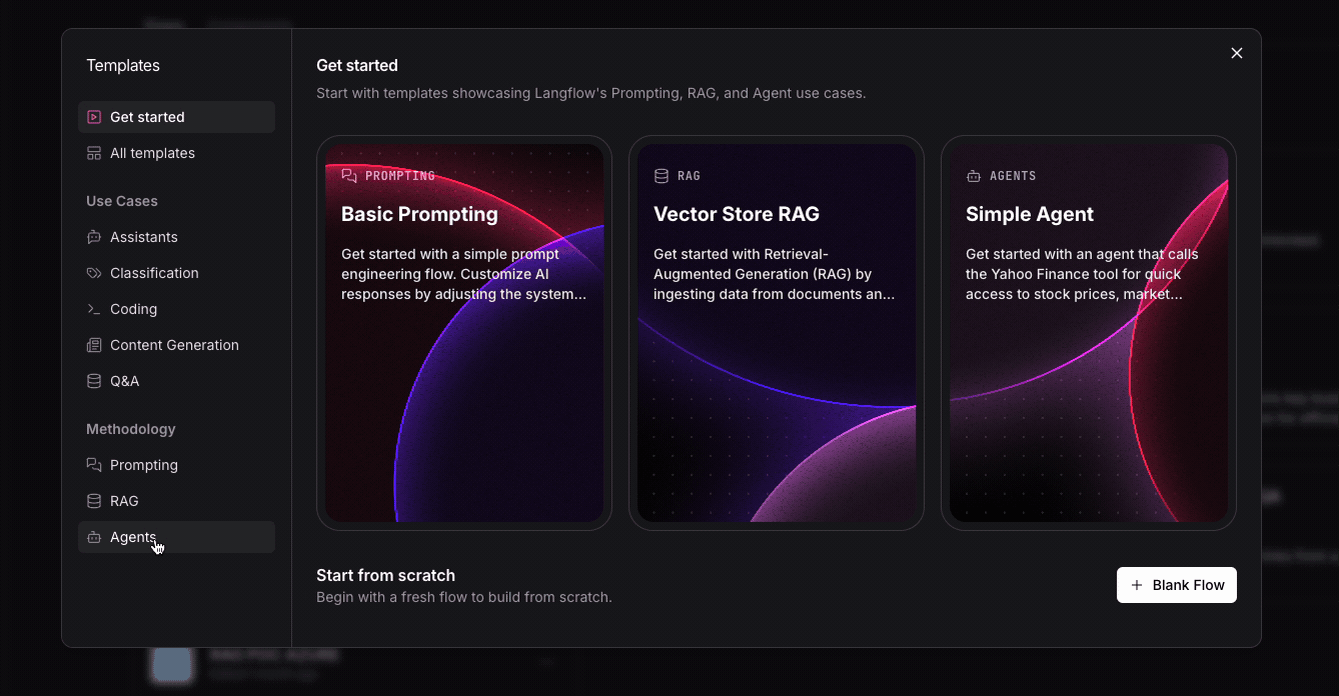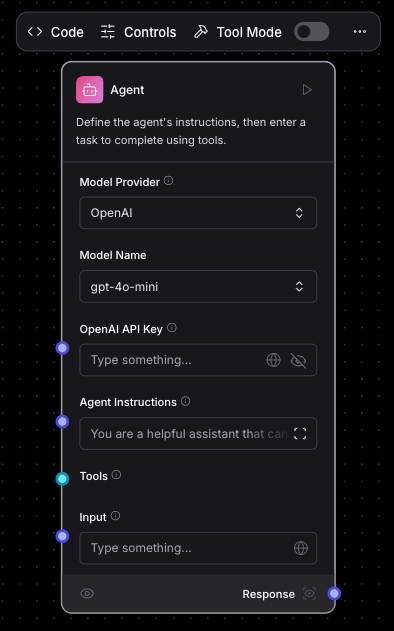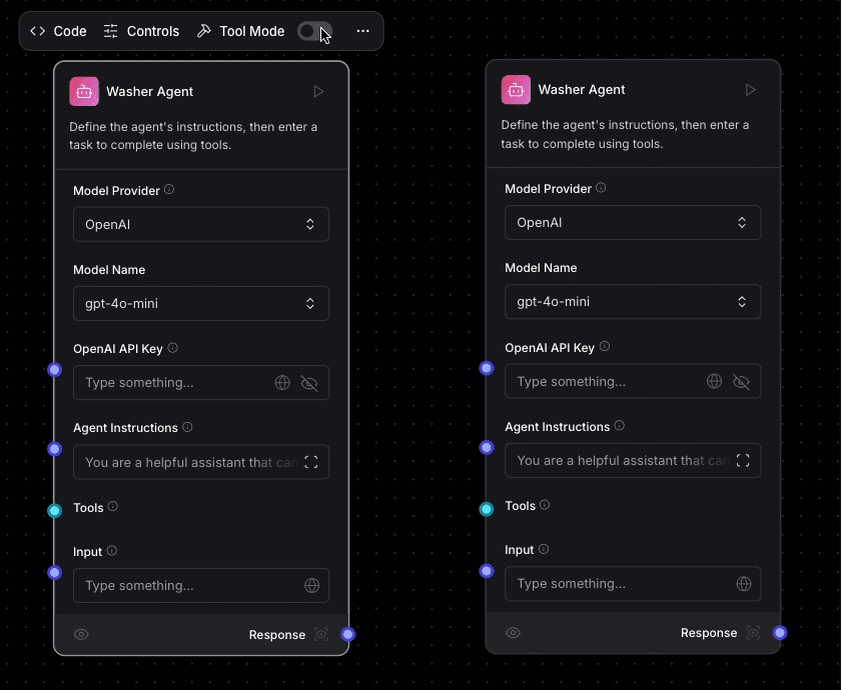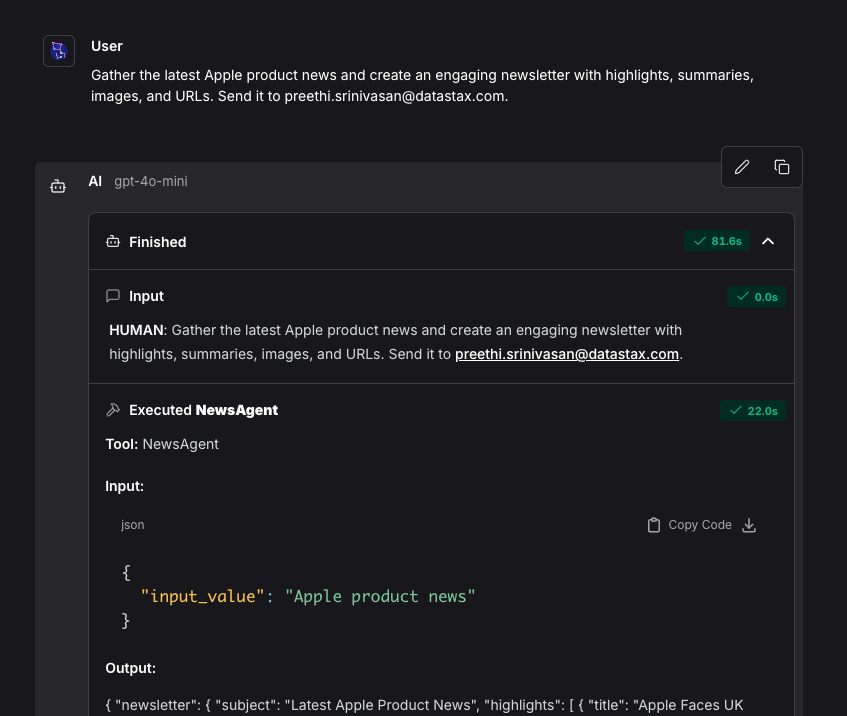Langflow is the visual IDE for LangChain-based RAG and multi-agent AI apps. The open-source and cloud hosted platform, with its prebuilt components and simple drag-and-drop interfaces for connecting to any model, API, data source, or database, makes it easy to rapidly develop, experiment, and iterate on the way to building generative AI apps.
If you’ve used previous Langflow versions to build AI apps, you’ll find even more new features to love in Langflow 1.1. Here’s what this major release brings you:
- New visual experience - A whole new experience that makes building GenAI applications intuitive, a new enhanced playground, dark mode, more templates for you to easily get started, with a dash of color.
- New Langflow agent experience - Build powerful multi-agents with a simplified Langflow agent, new component-as-tool capabilities, agent-to-agent communication, visibility into agents' executions and reasoning, and more.
Langflow 1.1 is now available in both OSS and DataStax cloud hosted Langflow.
What’s new in building agents with Langflow?
- New agent templates for you to easily get started with building agentic flows.
- A new Langflow agent component that simplifies building agentic pipelines. No need to use another agent framework and be limited by its structure or functionality.
- Any component in Langflow can be used as a tool for agents. No need to be limited by tools, anything can be a tool! You can make any component talk to your agents.
- Agents can directly communicate to other agents. No need for brokers or other task orchestrators. Let the agents talk!
- Custom components can be used as tools. You can create any code and use it as a tool for the agents. You can further customize any agent.
- Easy tracing of agent actions. Now you can see how your agents are executing.
How do I use these new agent capabilities to build multi-agents GenAI apps?
In a multi-agent app, each agent can be specialized to perform a particular task and collaborate with other agents. Multi-agentic systems can provide higher quality results when compared to a single agent, and solve more complex tasks.
It’s easy to build powerful multi-agents with Langflow’s UI builder! You can start with the agent templates now available in Langflow.

Below is the new and simplified Langflow agent component. You can now natively build agents in Langflow using the Langflow component without depending on other agent orchestrators like CrewAI. Add your model details and instructions for the agent.

You can make an agent into a tool by enabling Tool Mode for it to communicate with another agent. Simply connect the agents once you’ve enabled Tool Mode. This eliminates unnecessary intermediate tools and components and manual sequencing of tasks for agent communication.

You can make any component into a tool to enable it to talk to agents. Simply add the following to the code of the component:
tool_mode=True

The Langflow playground provides you live status on your agents and their actions. You now have in-depth visibility into your multi-agent environment.

Let’s put this all together and look at a demo of using multi-agents in Langflow. This demo uses multiple agents to collect news, create a newsletter, curate content, and send out the newsletter to the recipient. This employs Langflow’s new agentic capabilities, including the new component, using agents and components as tools, and agent tracing.
For more information on building agentic flows, check out the Langflow documentation on agents.
Build your agentic GenAI apps with Langflow 1.1
Agents do two things: they make decisions and they take action. With Langflow 1.1, you can easily build multiple agents that execute on different decision points and action points working together seamlessly. Langflow 1.1 gives you the flexibility for your agents to use your code, your tools, and components, all in a visual agentic builder with a touch of user experience magic.
Try Langflow 1.1 today. Select a new flow, choose an agent template , and build your AI agents!







